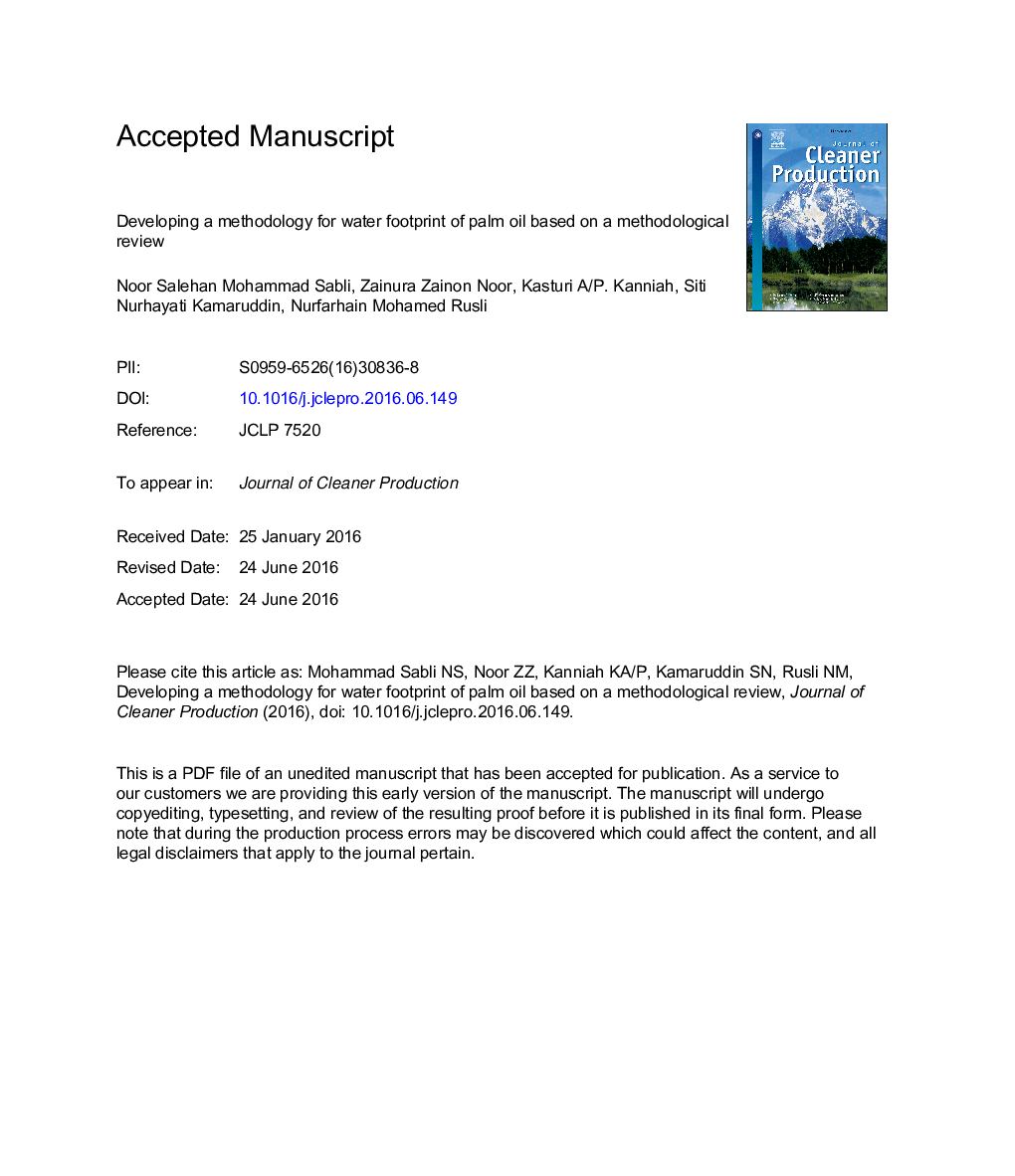| Article ID | Journal | Published Year | Pages | File Type |
|---|---|---|---|---|
| 5480155 | Journal of Cleaner Production | 2017 | 38 Pages |
Abstract
The increased use of freshwater for domestic, industrial and agricultural activities has rapidly led to the scarcity of global water supplies with agricultural industry being the main consumer of fresh water, accounting to approximately 85% of the global freshwater consumption. Palm oil is the biggest and fastest growing vegetable oil on the world market and oil palm plantations are covering large land areas especially in Indonesia and Malaysia. Several environmental problems related to oil palm plantation have been reported, such as biodiversity loss, land use change, huge water consumption and river pollution. Water footprint analysis has been used to indicate the water consumption of a country, product, services or even an individual. However, methods to assess water usage in crude palm oil plantations is not available to date. Thus, this paper aims to provide a method in calculating water footprint for crude palm oil productions in Malaysia. The most appropriate method was identified based on an extensive literature survey. ISO 14046 was chosen as a guideline because it is an international standard in reporting and assessing water footprint (WF) with LCA approach. This study preferred the use of the comprehensive water footprint assessment compared to the stand-alone assessment because this approach can assess all the potential environmental impact related to water which are associated with a product, process or organization. It is expected that the water degradation level in this plantation can be identified to provide guidelines to the government, plantation companies as well as developers for the development of sustainable palm oil plantation in Malaysia.
Keywords
Related Topics
Physical Sciences and Engineering
Energy
Renewable Energy, Sustainability and the Environment
Authors
Noor Salehan Mohammad Sabli, Zainura Zainon Noor, Kasturi A/P. Kanniah, Siti Nurhayati Kamaruddin, Nurfarhain Mohamed Rusli,
